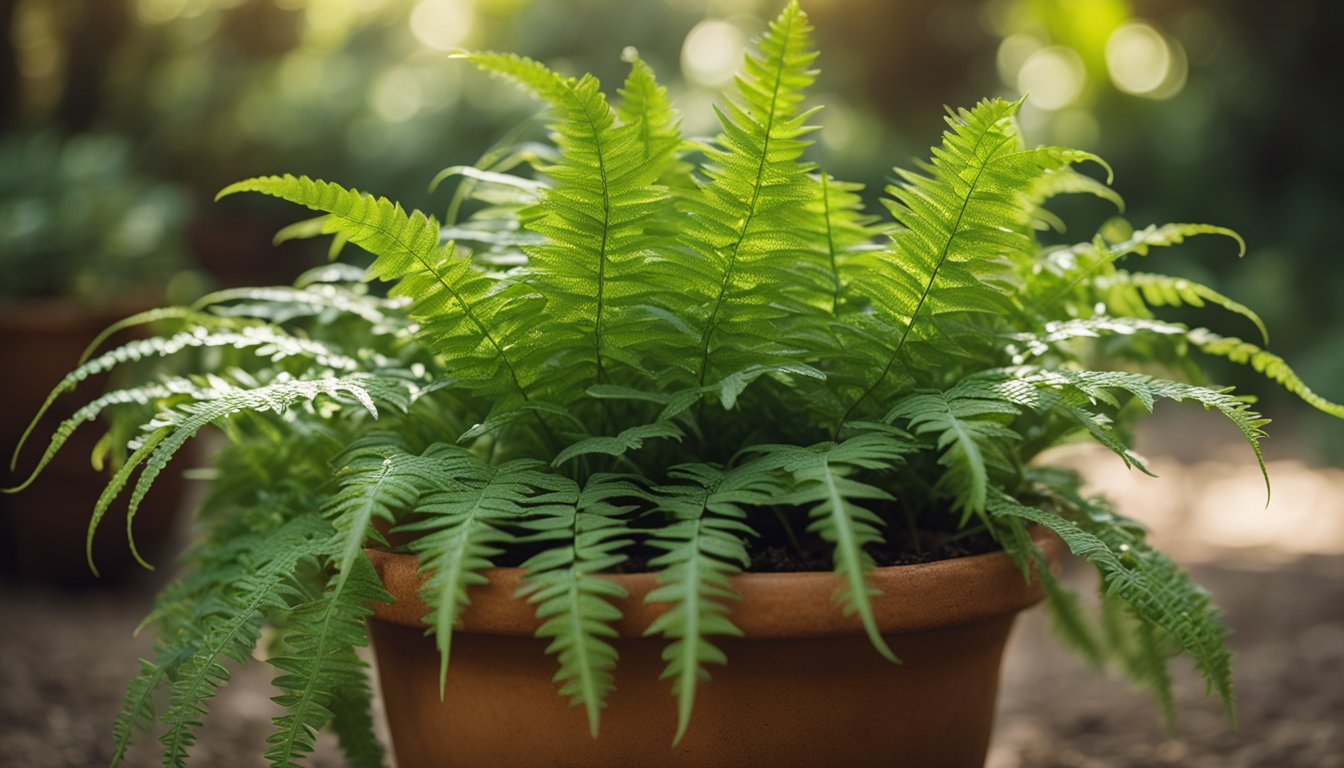If you’re looking to add a touch of the extraordinary to your indoor garden, the kangaroo fern might just be what you need. With its unique, lush foliage and distinctive shape, this plant isn’t just a conversation starter; it’s a stunning addition that can elevate any space. I’ve found that its vibrant green leaves can brighten up even the dullest corners of my home, making it a favorite among plant enthusiasts.
Overview of Kangaroo Fern
Kangaroo fern, known scientifically as Microsorum diversifolium, thrives in tropical and subtropical regions. I appreciate its bold, lush appearance, which adds life to any indoor space. These ferns flaunt unique fronds resembling a kangaroo’s paw, hence the name.
This plant prefers indirect sunlight. Too much direct light can scorch its leaves. It flourishes well in humid conditions. I often mist my kangaroo fern to keep it happy. Regular watering maintains its vibrant green color. However, I ensure the soil drains well to prevent root rot.
Kangaroo ferns are relatively low-maintenance. They don’t demand frequent fertilizing. I typically feed mine every couple of months during the growing season. Each time I see new growth, it feels rewarding.
These ferns also show resilience to pests and diseases. I rarely encounter issues with bugs. Sounds like a win-win to me! With proper care, this fern can thrive for years, making it a favorite among plant lovers.
Kangaroo ferns also adapt well to various indoor settings. They look great in hanging baskets or on shelves. Their unique shape adds character and interest. For those looking to brighten their homes, this plant is a top choice.
Features of Kangaroo Fern

Kangaroo fern, or Microsorum diversifolium, boasts distinctive features that make it stand out in any indoor space.
Leaf Structure
The leaves of the kangaroo fern are bold and lush. They resemble the shape of a kangaroo’s paw, hence the name. Rich green hues dominate their appearance, adding a vibrant touch to my home. The leaves can grow up to 18 inches long and often have a wavy edge. Their unique texture catches the light beautifully, creating a stunning visual impact. When I place it near a window, the sunlight filters through the leaves, making them sparkle like gems.
Growth Habit
The growth habit of the kangaroo fern is intriguing. It spreads outward, producing new fronds that emerge from the base. I appreciate how it fills in spaces without becoming overwhelming. This fern can reach a height of around 2 to 3 feet, making it perfect for corners or shelves where other plants might struggle. With a little love, the kangaroo fern thrives in hanging baskets, gracefully trailing down. Its adaptability makes it a fun choice for indoor gardens, bringing life to any area.
Care Requirements
Caring for a kangaroo fern is simple and rewarding. This plant thrives with the right attention to its light, water, and soil needs.
Light Conditions
Kangaroo ferns prefer bright, indirect light. They love sunlight but don’t enjoy direct rays burning their delicate fronds. Position your fern near a window with filtered light. If the leaves start to yellow, they’re likely getting too much sun. But don’t fret; just move them a bit further from the window.
Watering Needs
Watering should be consistent but not excessive. Keep the soil slightly moist, allowing the top inch to dry out between waterings. A good rule of thumb? If you can poke your finger into the soil and it feels dry, it’s time to water. In the warmer months, the ferns may sip a bit more, so keep an eye on them. Remember, soggy roots lead to sadness, also known as root rot.
Soil Preferences
Soil that drains well is crucial. A mix designed for ferns or regular potting soil blended with perlite works wonders. Avoid heavy, compacted soils. Good drainage keeps the roots happy, avoiding excess moisture that ferns can’t handle. The kangaroo fern appreciates nutrient-rich soil, so don’t skip feeding them every few months with a balanced fertilizer. They’ll reward you with lush growth and stunning leaves.
Common Varieties of Kangaroo Fern

Kangaroo ferns come in several varieties, each showcasing unique traits that can fit different preferences in indoor gardening. Here are some common varieties I encounter frequently:
Microsorum diversifolium
This is the classic kangaroo fern with its signature lobed fronds. I love how these leaves can grow up to 18 inches long, creating a lush look.
Microsorum pteropus
Known as the water kangaroo fern, it adapts well in aquariums. The plant features more delicate fronds that sway gently in the water. It adds a unique touch to any setup.
Microsorum thymifolium
Often dubbed the thyme-leaved kangaroo fern, this variety offers smaller, rounder leaves. I find its compact nature ideal for shelves or small spaces, where it still makes a big statement.
Microsorum ‘Kangaroo Paw’
This cultivar has distinct, claw-shaped leaves that mimic a kangaroo’s paw. The unusual shape draws attention, and I enjoy where it adds character to any room.
Microsorum ‘Green Velvet’
With its soft, velvety texture, this type stands out. The rich green color pops against other plants and gives any indoor collection a striking dimension.
Each variety brings its own flair to a space. They thrive in indirect light, just like their cousin, the classic kangaroo fern. When choosing a variety, consider where you’ll place it in your home. Opt for a spot with humidity, and you’ll boost their health and vibrancy.
Uses and Benefits of Kangaroo Fern

Kangaroo ferns add vibrancy to indoor spaces. Their lush green leaves not only brighten up rooms but also purify the air. I’ve noticed how they filter toxins, contributing to a healthier environment.
Kangaroo ferns thrive in humid conditions, making them perfect for bathrooms or kitchens. I often place mine where steam from showers can give it a boost. They thrive on that moisture, so creating a little humidity goes a long way.
These ferns serve as natural decor. Their unique shapes and sizes stand out without overwhelming the surroundings. They can fit beautifully on shelves or hang from baskets, drawing attention without shouting for it.
Kangaroo ferns are also low-maintenance. I love how they don’t demand constant care. Watering once a week often works wonders, keeping the soil moist yet not soggy. It’s a relief to have a plant that doesn’t require constant fussing, perfect for busy lifestyles.
Decoratively speaking, they adapt well to various styles. Whether your decor leans modern, rustic, or eclectic, these ferns blend right in. Their flexibility speaks to many aesthetics, offering options for every space.
Before You Go – Kangaroo Fern
The kangaroo fern has truly become one of my favorite indoor plants. Its vibrant leaves not only add a splash of green but also create a calming atmosphere in my home. I love how easy it is to care for and how it thrives in various conditions.
Whether you’re an experienced plant parent or just starting out the kangaroo fern is a fantastic choice. Its adaptability and unique appearance make it a standout in any indoor garden. Plus knowing it helps purify the air adds another layer of appeal.
If you’re looking to enhance your space with a touch of nature the kangaroo fern is definitely worth considering. It’s a beautiful and resilient addition that I can confidently recommend to anyone. Don’t forget to add The Herb Prof Home Page to your favorites so you don’t miss out on future articles.
References – Kangaroo Fern
Little Herb Encyclopedia, by Jack Ritchason; N.D., Woodland Publishing Incorporated, 1995
The Ultimate Healing System, Course Manual, Copyright 1985, Don Lepore
Planetary Herbology, Michael Tierra, C.A., N.D., Lotus Press, 1988
Handbook of Medicinal Herbs, by James A. Duke, Pub. CRP Second Edition 2007
The Complete Medicinal Herbal, by Penelope Ody, Published by Dorling Kindersley
Check the Following Articles
Growing Oyster Mushrooms at Home for Delicious Harvests
Top Herbal Remedies for Boosting Immune System Health
12 Spike Fruit Names and Their Delicious Benefits
Different Kinds of Bananas: Nutrition and Culinary Uses
Frequently Asked Questions – Kangaroo Fern
1. What is a kangaroo fern?
The kangaroo fern, scientifically known as Microsorum diversifolium, is a popular indoor plant recognized for its lush, bold fronds that resemble a kangaroo’s paw. It thrives in tropical conditions and is ideal for adding greenery to indoor spaces.
2. How do you care for a kangaroo fern?
Kangaroo ferns prefer bright, indirect light and humidity. Keep the soil slightly moist but not soggy, using well-draining soil. Regular misting and balanced fertilization help promote healthy growth, while minimal maintenance makes it suitable for busy plant lovers.
3. What are the common varieties of kangaroo fern?
Common varieties include Microsorum diversifolium, the classic type; Microsorum pteropus, known as the water kangaroo fern; Microsorum thymifolium, with smaller leaves; Microsorum ‘Kangaroo Paw’; and Microsorum ‘Green Velvet’, recognized for its soft texture. All thrive in similar conditions.
4. Can kangaroo ferns purify indoor air?
Yes, kangaroo ferns can help purify indoor air by filtering toxins, making them a great addition to your home. Their lush foliage not only beautifies spaces but also contributes to a healthier environment.
5. Where is the best place to display a kangaroo fern?
Kangaroo ferns flourish in bright, indirect light and can be displayed in various places like hanging baskets, shelves, or corners. They enhance any indoor space without overwhelming it, adding character and interest.
6. How often should you water a kangaroo fern?
Water your kangaroo fern weekly to keep the soil consistently slightly moist. Ensure good drainage to avoid soggy soil, which can lead to root rot. Adjust the frequency based on the humidity and temperature in your home.

